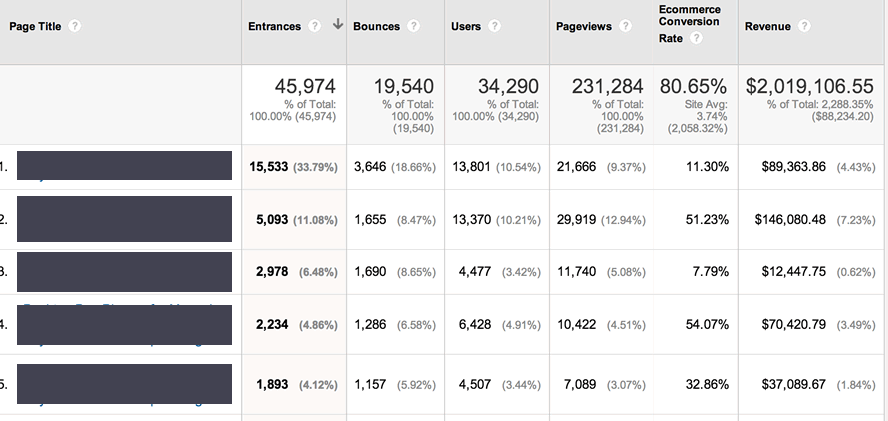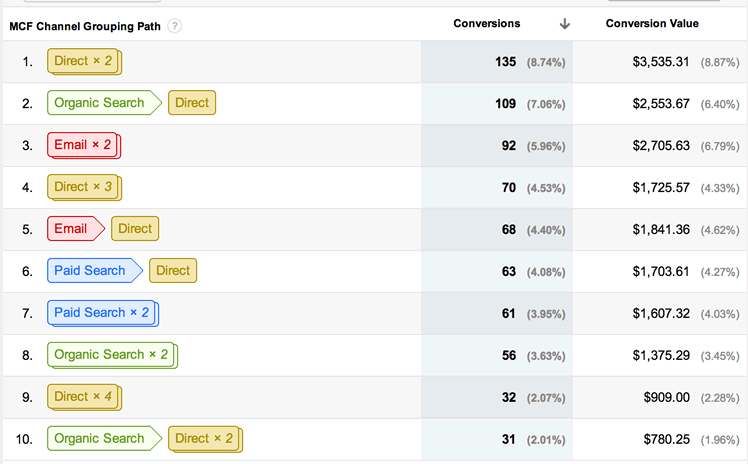No matter where your store ‘lives’, you need to track what’s generating revenue and what’s not. That data helps you:
- Manage paid advertising, like pay-per-click
- See how individual channels and products perform
- Measure cost per acquisition
Tracking those conversions may seem obvious: Go into Google Analytics (or whatever tool you use), click ‘conversions’ and see what’s generating revenue.
What’s Missing
That’s fine, but you miss some crucial information:
- Which pages on your site help generate that revenue
- What behaviors leadto customer conversion
- Which channels assist with conversions, but aren’t ‘last click’
Here’s a quick overview of each. In future posts, I’ll go over how you collect and use this data in detail:
Page Revenue
Google Analytics, and most other traffic measurement tools, will show you page value. That’s the actual revenue per page view of a specific page on your site.
This is priceless data. It lets you see what content on your site generates the greatest value. It also lets you narrow down the attributes of the best content. For example:

That tells me some basic information: Revenue generated by each page, for example. But if I dig just a bit deeper, I see that:
Bounce rate doesn’t really affect revenue. Pages with very high bounce rates (25–51%) still generate strong revenue. So I shouldn’t obsess too much about that.
Time on page and page views don’t have a direct impact, either. Huh.
There’s no clear answer there (I’ll show you how to get the answer in my next post) but I can at least look at the pages themselves and see what I can figure out (spoiler alert: It was the customer testimonials. Pages with them outperformed pages without).
Circumstances
This is more subtle. You want to see if any particular customer behavior increases the chance a customer will buy. If I take a look at this data:

One thing leaps out, grabs my lapels and shakes me: Returning visitors are far better revenue generators. And they generate more revenue. That’s a bit unusual, at least for the client’s industry.
I can act on that: I need to maintain brand awareness of visitors. I can use retargeting, social media advertising, paid search or other vehicles to do it.
Assisting Channels
Most businesses use the ‘last click’ to figure out which channels work best. So, if a customer visits the web site once via Google, then a second time by typing in your web address (a ‘direct’ visit). The direct visit gets all of the credit.
That can lead to some bad decisions: If you don’t know that search results are starting the buying process, you might slash your efforts in paid and organic search. That’ll almost certainly hurt your bottom line.
Most analytics packages have a multi-channel attribution tool, like this one in Google Analytics:

You can see which channels contribute to conversions, and avoid amputating quality channels.
The Lesson
Conversion tracking is crucial. But so is using it wisely. Find assisting channels, determine which pages work best, and figure out desirable customer behaviors.
Next time: Using conversion tracking to find good pages (and why they’re good).
